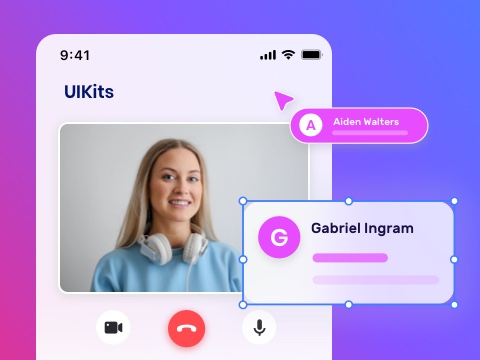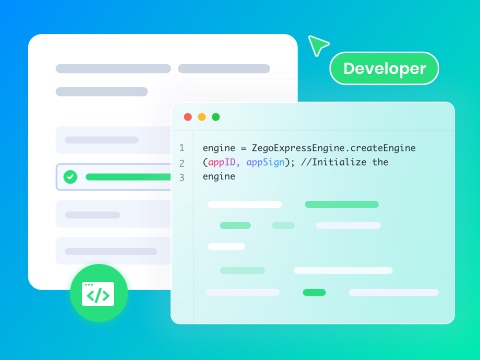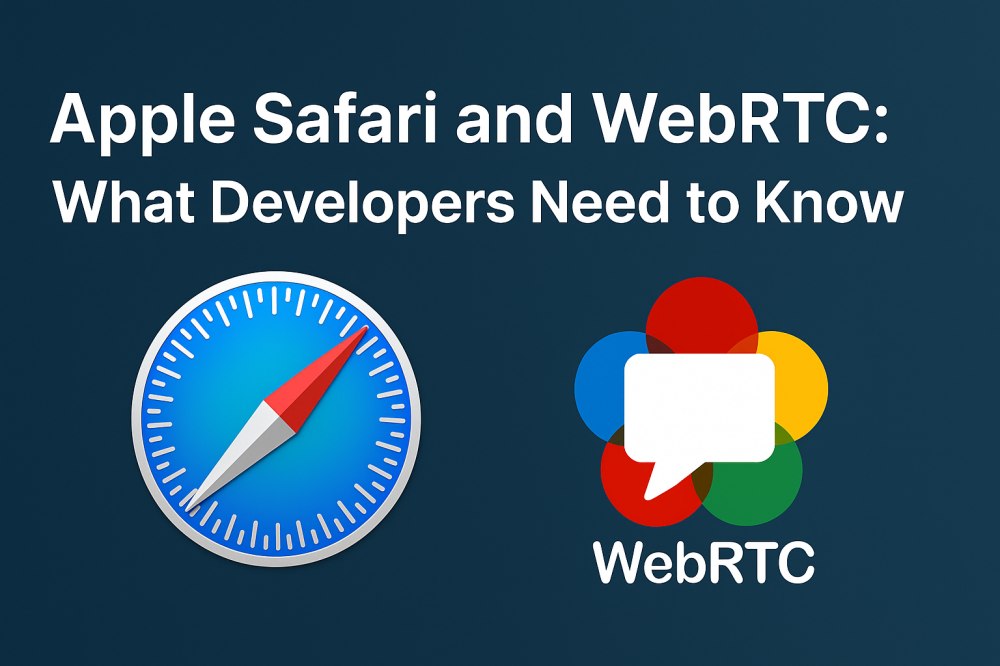Apple Safari WebRTC support has become increasingly important for developers building real-time communication experiences. WebRTC is now a fundamental technology for enabling video, audio, and data communication across browsers. For teams targeting Apple users, understanding how WebRTC works in Safari is essential. Given Safari’s dominance on iOS and macOS, optimizing WebRTC-based applications for this environment ensures a smooth and consistent user experience.
What is WebRTC and Why It Matters?
WebRTC (Web Real-Time Communication) is an open-source project that enables direct peer-to-peer communication in browsers without plugins. It powers applications like video conferencing, voice calls, file sharing, and live broadcasting. Developers rely on WebRTC to deliver real-time communication features while reducing infrastructure overhead and latency.
Apple Safari WebRTC Support
Safari introduced WebRTC support in version 11, marking a significant step for real-time communication on Apple devices. Over time, Safari has improved its WebRTC implementation, adding support for key APIs like getUserMedia and RTCPeerConnection. However, compared to Chrome and Firefox, Safari’s rollout has been more conservative, with certain features arriving later. Developers should reference the latest Safari release notes to stay up to date on compatibility.
Key Limitations of Apple Safari WebRTC
Despite supporting core WebRTC APIs, Safari presents some limitations that developers must consider:
- Codec support is narrower, primarily H.264, which can limit flexibility compared to VP8/VP9 in other browsers.
- Screen sharing through getDisplayMedia was not available until recent updates, and may still be restricted in certain contexts.
- Safari enforces strict autoplay policies, meaning media playback may require user interaction.
- iOS restricts some WebRTC behavior within embedded browsers like WKWebView, requiring additional handling for permissions and rendering.
Best Practices for WebRTC on Safari
To optimize Apple Safari WebRTC, developers should follow several practical recommendations that address the browser’s unique constraints and deliver a better end-user experience:
- Use H.264 as the default codec. Safari primarily supports H.264, and while other codecs like VP8 are widely used in Chrome and Firefox, relying on H.264 ensures stable video connections across iOS and macOS.
- Handle user media permissions gracefully. Safari requires explicit permission from users to access the camera and microphone. Developers should design clear permission prompts and handle denial scenarios with fallback UI and error messages that inform the user.
- Test autoplay restrictions carefully. Safari blocks autoplay of media with sound unless it follows a user interaction. To avoid playback failures, implement user-triggered play buttons and consider offering a muted preview when appropriate.
- Integrate TURN servers as part of your signaling architecture. Apple devices are often used in networks with strict NAT or firewall policies. TURN servers ensure fallback paths for media relay when peer-to-peer connections fail.
- Use adapter.js or similar libraries. WebRTC implementation varies across browsers. A cross-browser shim like adapter.js normalizes differences in API behavior, improving reliability and reducing the need for browser-specific code branches.
- Continuously test on real Safari environments. Emulators may not reflect Safari’s actual behavior, especially on iOS. Regular testing on physical devices helps identify edge cases related to autoplay, layout, and performance.
WebRTC Safari Use Cases
Several industries rely heavily on Safari-compatible WebRTC implementations, especially due to Apple’s market share on iOS and macOS devices:
1. Healthcare
Telemedicine platforms that run on iPhones or iPads require stable, secure, and real-time video communication. Ensuring that consultations work smoothly in Safari enables doctors and patients to connect without friction, even in low-bandwidth or mobile environments.
2. Education
Online classrooms accessed through Safari on MacBooks or iPads benefit from optimized WebRTC performance. Interactive lessons, screen sharing, and live discussions rely on reliable browser support to maintain engagement across devices commonly used by students and teachers.
3. Customer Service
Real-time support tools, such as live video chat with agents, need consistent performance across all devices. Safari-compatible WebRTC ensures that users can access customer service without switching browsers or downloading third-party apps, improving accessibility.
4. Social Platforms
Apps that offer video calls, live streams, or group chats must deliver seamless real-time experiences on iPhones and other Apple devices. WebRTC compatibility with Safari is essential to ensure social interactions are smooth, without visual or audio lag.
How to Manage WebRTC in Safari
Managing WebRTC functionality in Safari requires attention to both technical constraints and user-facing settings. Developers should be aware that Safari handles permissions, autoplay policies, and media device access differently than other browsers.
To begin, ensure that your application handles camera and microphone permissions properly. Safari prompts users with native dialogs, and developers should offer fallback UI or explanations if access is denied. Testing these prompts regularly on iOS and macOS devices is essential.
Safari’s autoplay policy blocks media with audio unless triggered by user interaction. Developers should structure their applications to initiate media playback only after a clear user action, such as clicking a button. This helps avoid unexpected failures when establishing a WebRTC session.
In iOS Safari, embedded browsers like WKWebView add further limitations. Developers building hybrid apps should anticipate issues with WebRTC rendering and permissions, and may need to implement custom handling or platform-specific workarounds.
It is also helpful to familiarize yourself with Safari’s Develop menu. This includes WebRTC internals for debugging peer connections, ICE candidates, and media flow. Reviewing Safari’s release notes can help you track evolving support for WebRTC APIs.
By understanding and managing these areas proactively, developers can deliver more stable and user-friendly real-time communication experiences on Apple devices.
How ZEGOCLOUD Helps You Handle Apple Safari WebRTC Challenges
ZEGOCLOUD’s Web SDK uses WebRTC to enable real-time audio and video across modern browsers, including Safari. While Safari imposes limitations on custom jitter control and bandwidth handling, ZEGOCLOUD has optimized performance for these conditions.
In low-bandwidth scenarios (e.g., 300 kbps), the SDK maintains stable voice communication. Even under extreme conditions like 65% packet loss, it continues to deliver reliable audio and video. This makes it especially effective in regions with poor network quality.
ZEGOCLOUD also ensures full H.264 support, stable signaling, and up-to-date browser compatibility resources, helping developers bypass Safari-specific issues with minimal effort.
Conclusion
Supporting WebRTC in Safari is no longer optional for developers targeting Apple users. By understanding its limitations and applying best practices, developers can build applications that work seamlessly across all major browsers. For teams looking to accelerate development and ensure compatibility, leveraging a platform like ZEGOCLOUD can provide a significant advantage in delivering polished, reliable real-time communication features.
FAQ
Q1: Does Safari support WebRTC?
Yes, Safari supports WebRTC on both macOS and iOS. However, its implementation may differ slightly from Chrome or Firefox, so developers should test thoroughly to ensure compatibility.
Q2: Does Safari leak WebRTC IP addresses?
Safari is more privacy-conscious than some other browsers. While earlier versions might have exposed local IP addresses, recent updates have improved protections. Still, developers concerned about IP leaks should configure STUN/TURN servers properly.
Q3: Does WebRTC work on iOS?
Yes, WebRTC works in Safari on iOS devices running iOS 11 or later. However, some limitations apply, especially in WKWebView or embedded browsers. Developers should test for permissions and rendering issues.
Q4: Which browsers support WebRTC?
All major modern browsers support WebRTC, including Chrome, Firefox, Safari, Edge, and Opera. However, implementation details vary slightly, so cross-browser testing is essential for a smooth user experience.
Let’s Build APP Together
Start building with real-time video, voice & chat SDK for apps today!










